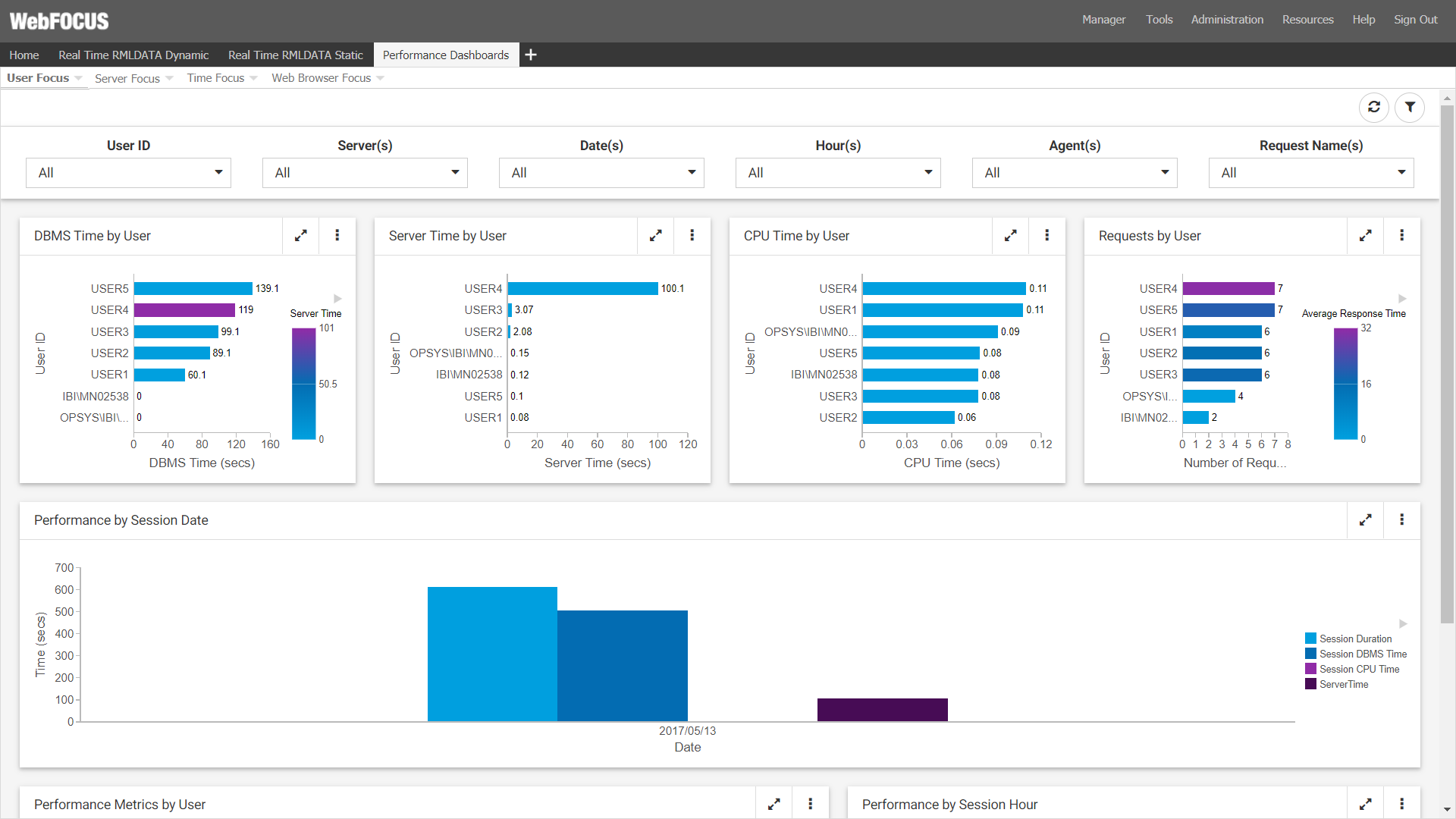Introducing WebFOCUS Enterprise Usage Monitor
|
Topics: |
This topic introduces the WebFOCUS Enterprise Usage Monitor and its main features.
Enterprise Usage Monitor Overview
WebFOCUS Enterprise Usage Monitor (EUM) is a tool that provides a real-time, 360-degree view of your WebFOCUS deployment and all associated enterprise information assets, including the reporting server, database server, and mid-tier application, as well as your users. The EUM application is based on WebFOCUS Business User Edition and requires Resource Analyzer to be configured. It extends and enhances resource tracking and management capabilities by allowing you to analyze and visualize vital resource management metrics across multiple WebFOCUS instances, such as frequently run reports, response times, and the number of reports generated by time of day. With this wealth of information, EUM allows you to achieve a deep understanding of user behaviors, resource consumption, and other factors that impact performance.
With EUM you can do the following:
- Visualize vital resource management metrics.
- Access detailed data about asset utilization and performance issues.
- Instantly notify stakeholders when metrics exceed thresholds.
- Analyze all aspects of consumption activity and query traffic.
The EUM portal, which is shown in the following image, is a browser-based application that displays important resource management metrics in interactive dashboards, visualizations, charts, and graphs that you can use to view key metrics and drill down to more detailed data.

The EUM portal is based on a standard Business User Edition (BUE) portal and allows you to perform the same tasks that you can perform with BUE. However, in addition to the BUE functionality, you also gain access to pre-developed resource management reports, dashboards, and visualizations that are included in your EUM package. You can use InfoAssist, a powerful thin-client analytics authoring tool, to create and share new resource management content and to generate customized versions of the default content that is available to you.
Another important EUM feature is the Alert Wizard. You can use the Alert Wizard to create alerts to recognize when key metrics, such as average response time, fall below a certain threshold and instantly notify those who can rectify the problem.
Other EUM features include:
- New metadata definitions that let users analyze and drill down to detailed resource management data, to rapidly identify performance and usage issues at the lowest level.
- The ability to offload CPU cycles from production systems to the EUM environment, conserving valuable resources.
- A consolidated enterprise resource management console that enables you to run server-based Resource Analyzer reports from EUM.
| WebFOCUS | |
|
Feedback |